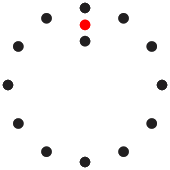You may, or may not, be wondering about the logo that appears on our latest posts.
Spark relates to an e-zine started last year by the EdTech (Educational Technology) and CDU (Capability Development Unit) teams at WelTec (Wellington Institute of Technology). It featured ruminations, reflections, a variety of articles from staff and celebration of staff successes as well as a quiz or two and some e-learning tips.
Its purpose was, and still is, to demonstrate change leadership, explain the need for developments, showcase innovation and leadership, celebrate staff and encourage a community of practice.
Our analytics showed a variety of staff responses to a variety of stories.
Our main problem, however, was that Spark remained internal to our community.
So we adapted.
We set up EdTech.Ako last year and began tweeting more frequently this year. We have our Twitter account linked to our For Staff Moodle section and another called Rauemi.Ideas.Resources.Pedagogy. We have a YouTube account WelTec Online and a new Soundcloud account, also under WelTec Online. Some of our inspiration came from attending the NDF2014 Conference.
The world gets to see our ruminations, WelTec staff can follow the blog but also find stories in our internal repository and find resources on our Moodle sites.
Items on our blog with the  logo indicate items following our current Spark theme, which in this issue is collecting evidence of student work.
logo indicate items following our current Spark theme, which in this issue is collecting evidence of student work.
In time we’ll set up a Facebook account but you can give us feedback here too.
Signed
The EdTech and CDU teams.

